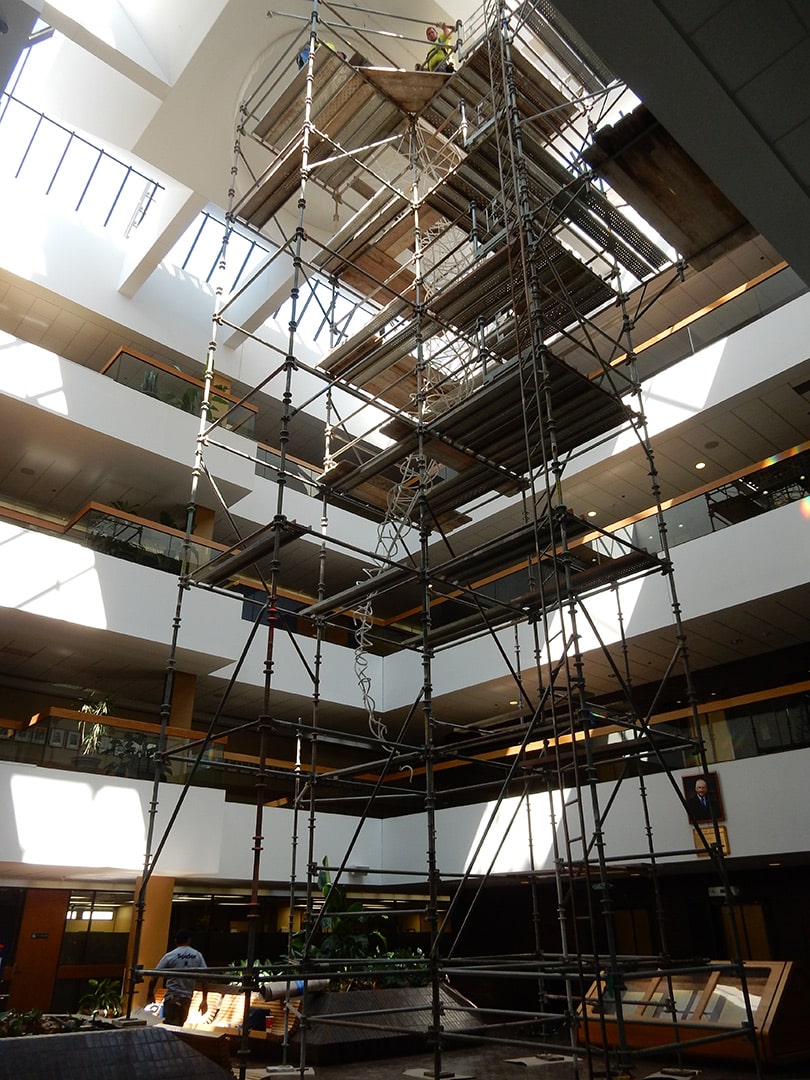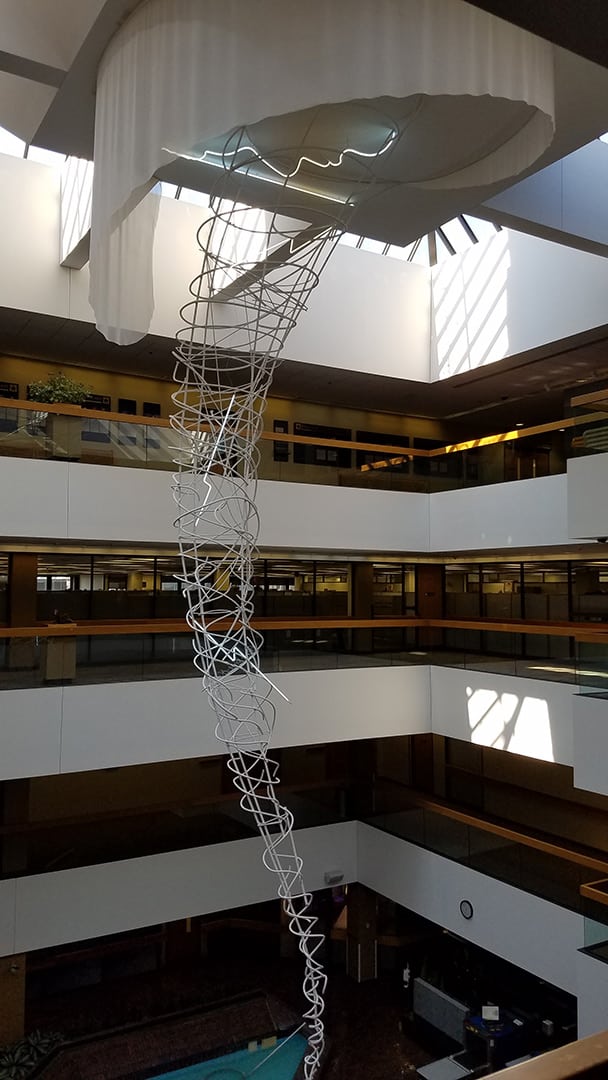Sculpture Conservation, Light Sculpture:
Rockne Krebs, creator of The White Tornado, is one of the pioneers of electronic and technology-based artworks or sculptures, has created some of the largest public art installations in the world. Krebs was widely recognized for his monumental sculpture installations with laser light – a new technology when he began to explore its potential for art in the 1960’s.
Krebs also worked in a wide variety of media including: neon, glass, lasers and is credited as being the first artist to use digital memory.
The GSA Art in Architecture Fine Arts Program tasked McKay Lodge Art Conservation Laboratory to treat Krebs’ sculpture The White Tornado. Located in The Frank Carlson Federal Building in Topeka, Kansas, this sculpture was installed in 1979.
The sculpture is a large installation reminiscent of a three-dimensional rendering of a “gesture drawing” of a tornado.  Neon tubing is dispersed within the sculpture. When viewed from the side, the neon forms lightning bolts that appear to be shooting out from the sculpture. In addition staring down at the tornado a representation of the artists face can also be seen. When viewed from below the same “lightning bolts” blend together to form a star. The challenge here was to repair the neon tubing which had long been nonfunctional.
Neon tubing is dispersed within the sculpture. When viewed from the side, the neon forms lightning bolts that appear to be shooting out from the sculpture. In addition staring down at the tornado a representation of the artists face can also be seen. When viewed from below the same “lightning bolts” blend together to form a star. The challenge here was to repair the neon tubing which had long been nonfunctional.
In the manufacture of neon tubing, two types of gas are used to fill lamp tubes: neon and argon. Neon (Ne) gas emits red light when charged with electricity (used in reds, yellows, and orange colors) and does not need mercury to light. Argon (Ar) gas emits blue light (used in greens, blues, and white colors) when charged with electricity and needs mercury to light.
Due to the mercury content, white neon tubing can no longer be “regassed” in-situ. Replacement of the tubes was the only option. To bend new tubing the old sections of neon had to be removed from the sculpture to use as templates. Access to the neon tubing was the largest problem. Located in a busy atrium of a Federal building the sculpture is 50 feet high and irregular in shape. Scaffolding was the only option that could provide safe access in and around the neon tubing.
 The nerve-wracking process of erecting scaffolding around fragile neon tubing of The White Tornado was completed without damage. Smartly, the original neon was removed and all the pieces were traced onto paper in case the tubing was damaged in transport.
The nerve-wracking process of erecting scaffolding around fragile neon tubing of The White Tornado was completed without damage. Smartly, the original neon was removed and all the pieces were traced onto paper in case the tubing was damaged in transport.
Once re-bent the tubing was re-installed. The “registration” of the tubing was critical, if one piece of tubing was installed incorrectly the star would not form correctly when viewed from below. Sighting the work from below was not possible due to the view being obstructed by the scaffolding. Accurate measurements were taken and field drawings were done to ensure that the tubing would be replaced in the same position as before.
Once installed the neon was tested and lit for the first time in 10+ years. Still the registration of the neon could not be verified until the scaffolding was completely broken down. The risk was that if the registration was off the scaffolding would have to be re-erected, a long and costly process!
With the scaffolding broken down the moment of truth arrived. The neon tubing was viewed from below and found to be in perfect registration!
The artist’s likeness now proudly stares back down at his creation!


